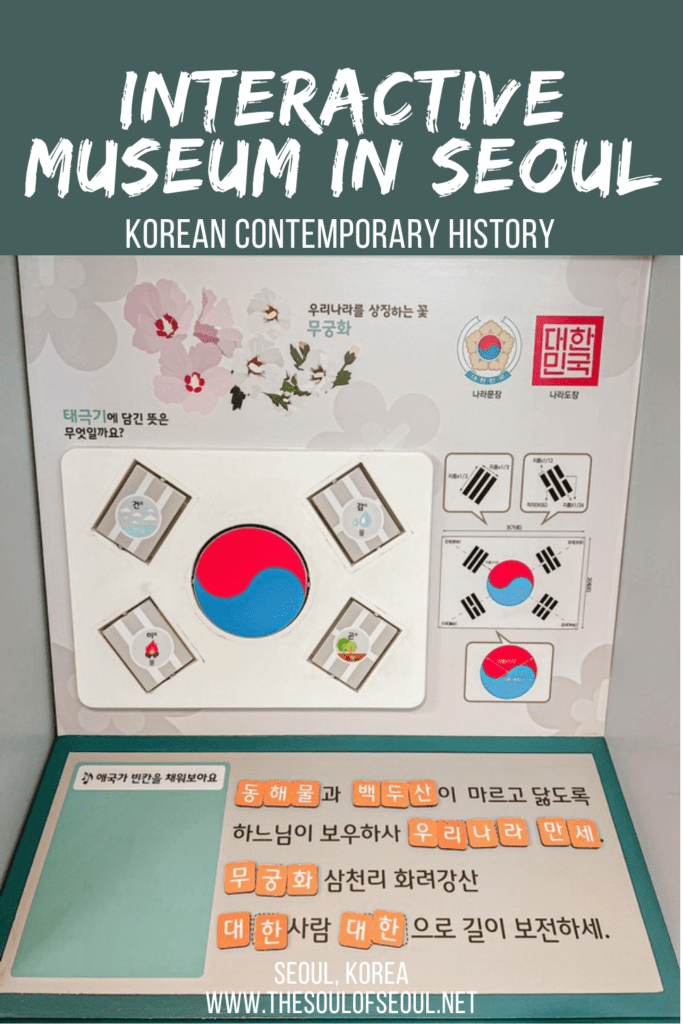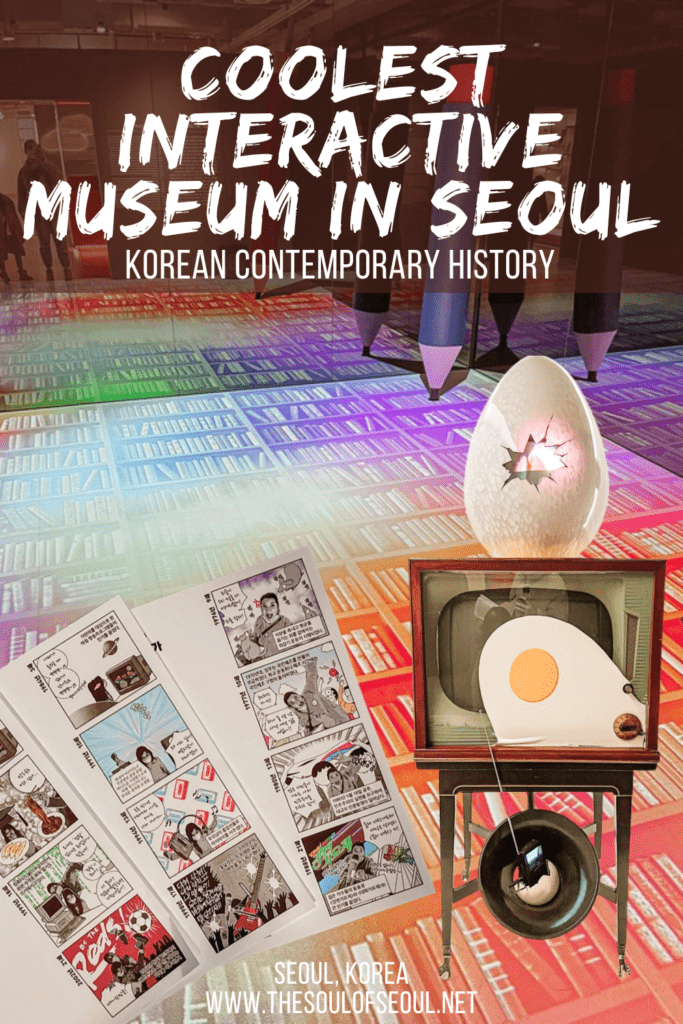The National Museum of Korean Contemporary History: Great For Kids and Views
Last Updated on January 24, 2024
We love visiting the national museums of Korea, not only are they free but they offer so much access to information and fun. The National Museum of Korean Contemporary History (대한민국역사박물관), right downtown next to Gwanghwamun Square is one of the most overlooked museums in Seoul but it’s awesome. The museum offers a unique perspective on Korea’s journey from the late 19th century to the present day. This interactive museum is great for both adults and kids. Get ready for history and fun!
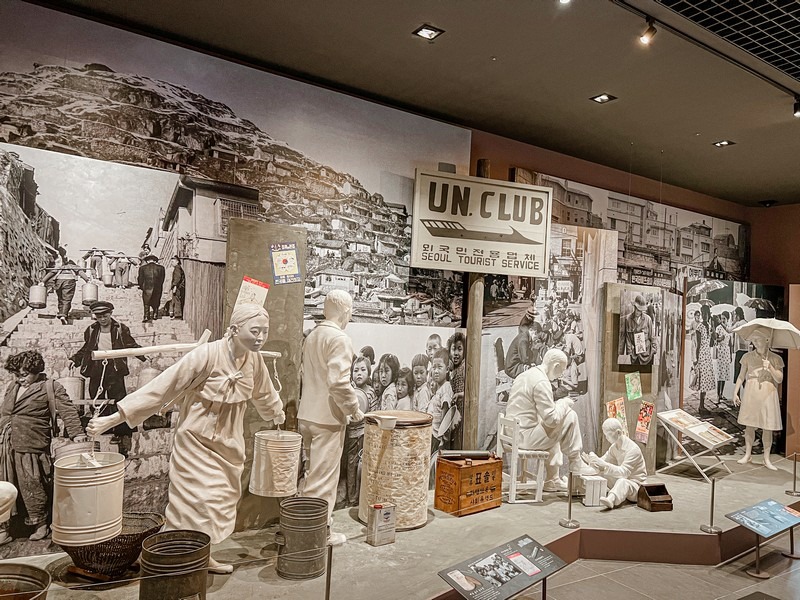
Learn more about this underrated museum in downtown Seoul:
- How To Get There
- Basic Info
- A Glimpse into Modern Korean History
- The Children’s Museum
- Enjoy the Interactive Exhibits
- The History Gallery
- Where to See Gyeongbokgung Palace from Above
(This post contains affiliate links, which means I receive a certain percentage of a sale if you purchase after clicking at no cost to you. Thank you for your support.)
How To Get There
Address: 198 Sejongdae-ro, Jongno-gu, Seoul (서울특별시 종로구 세종대로 198)
Directions: Take exit 2 of Gwanghwamun Station and walk straight to find the museum on the right.
Basic Info
Hours: Every day: 10:00am ~ 6:00pm
Admission: FREE
Website: https://www.much.go.kr
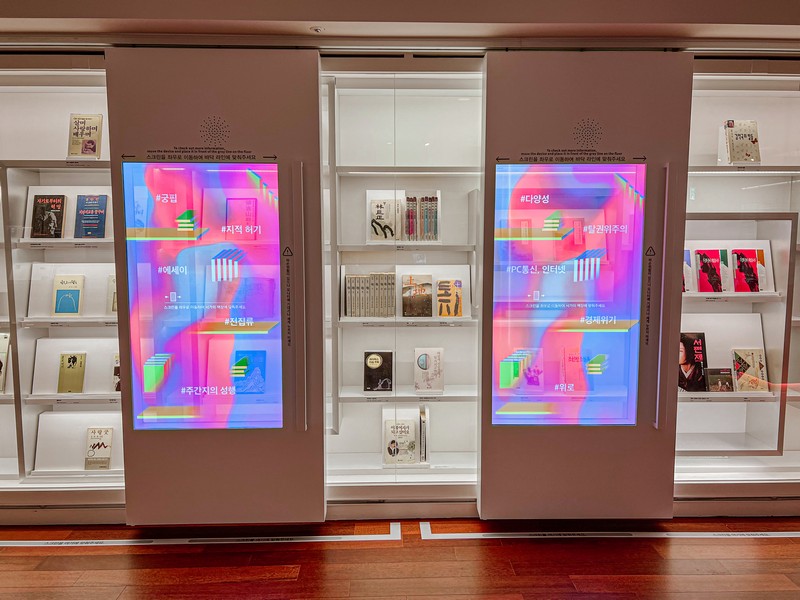


A Glimpse into Modern Korean History
The National Museum of Korean Contemporary History stands as the first national museum dedicated to the country’s contemporary history. The museum is home to four permanent exhibition halls, each covering a different historical period, along with two special exhibition halls, offering an immersive experience for visitors, as well as a children’s museum. The collection has over 1,500 artifacts and items that narrate Korea’s tumultuous journey.

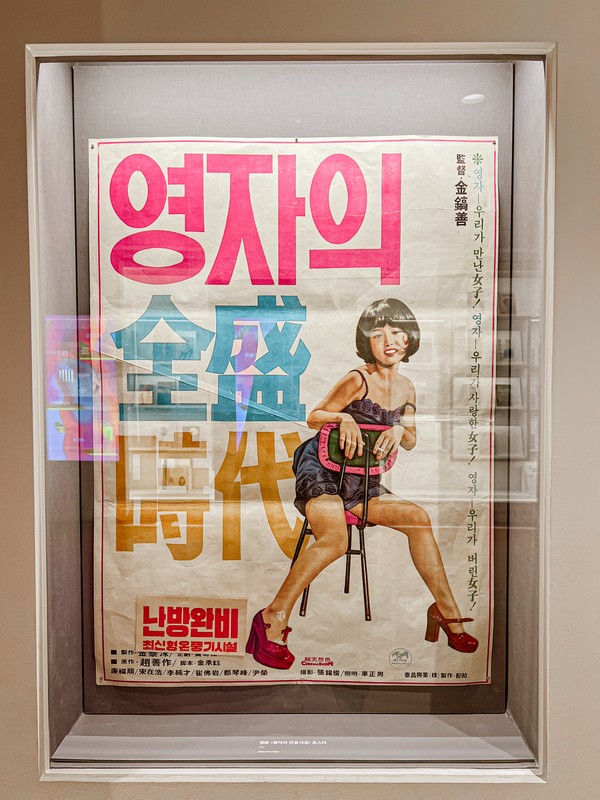
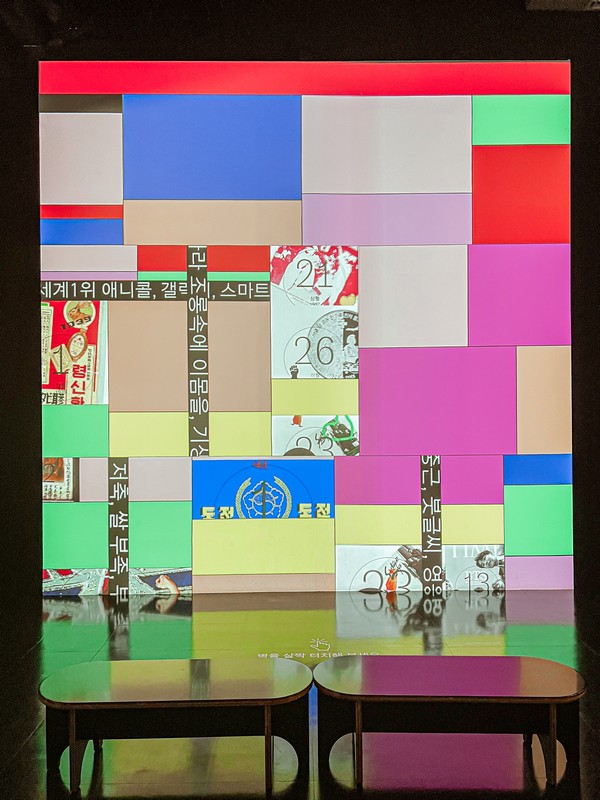
The museum’s permanent exhibition focuses on “Independence and the Establishment of the ROK Government.” This theme offers a comprehensive account of the events leading up to the founding of the Korean government in August 1948.
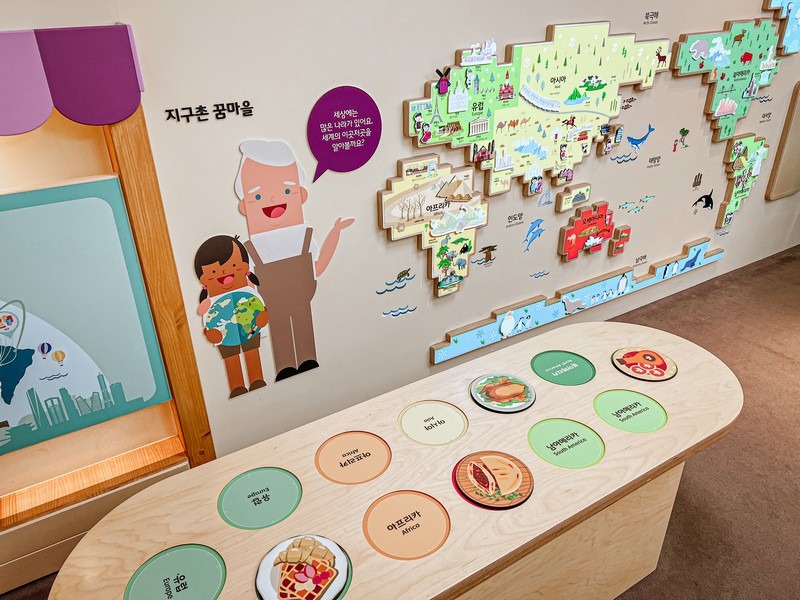
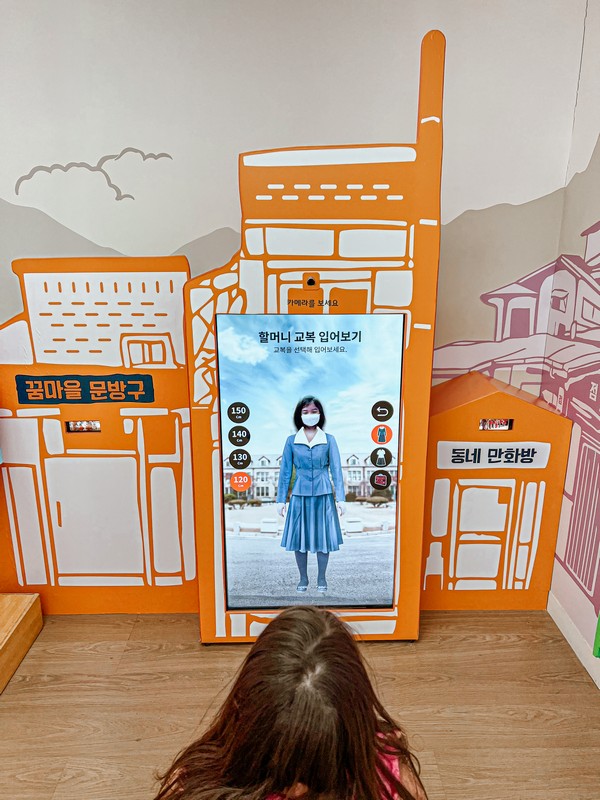
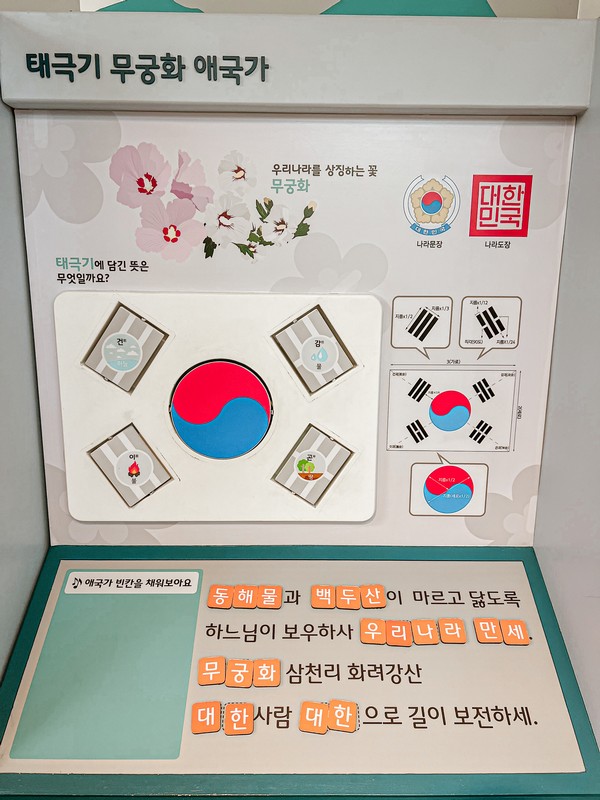
The Children’s Museum
Hours: 10:00am ~ 11:45am; 1:00pm – 5:30pm
If you have kids, after you enter, head to the left first before heading up to check out the permanent exhibitions. The children’s museum had some great activities that introduce the themes of the museum. It’s not huge, but a great half hour introduction to what’s upstairs and will get your kids moving and interacting with the information.
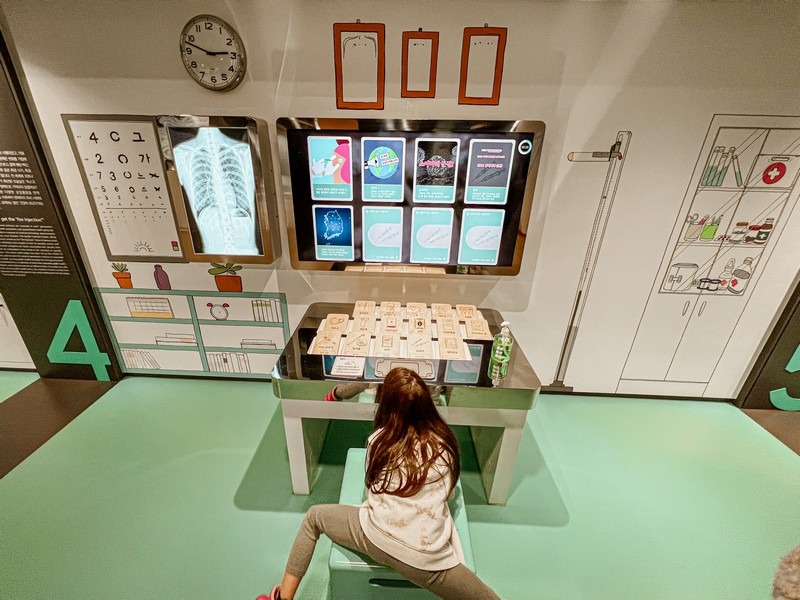
Enjoy the Interactive Exhibits
One of the museum’s highlights is its Interactive Gallery, designed to foster intergenerational communication. This was probably our favorite floor of them all. Here, visitors can engage with hands-on exhibits that bring to life the experiences of different generations in modern Korean history. If you have kids, this is a great extension of the Children’s Museum on the first floor.
The Interactive Gallery is huge and has so many stations on the floor to check out and enjoy. Some are better than others for kids, but all of them are very fun to explore. Upon entering, you grab a card from the desk that can be used at the various stations. There’s a cool station called “Generational slogans” with titles and sayings from newspapers. You can grab your own copy of a retro sign too.
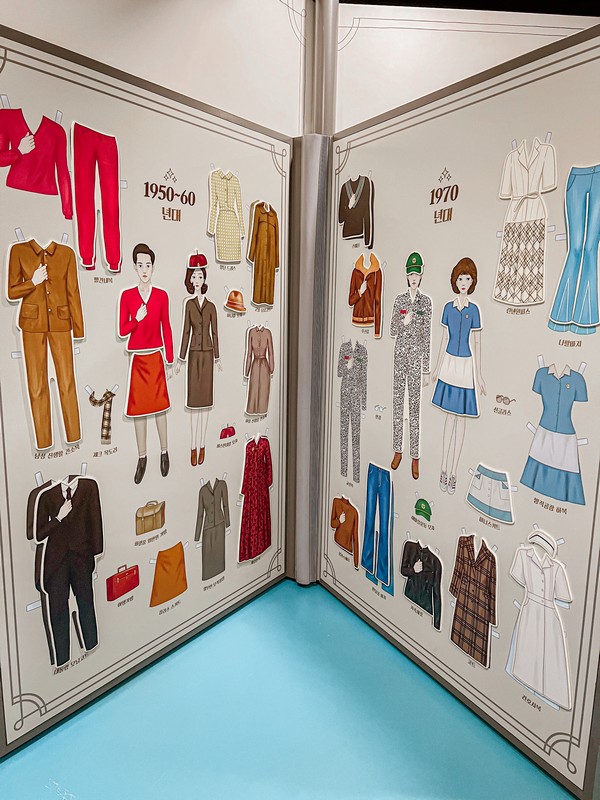
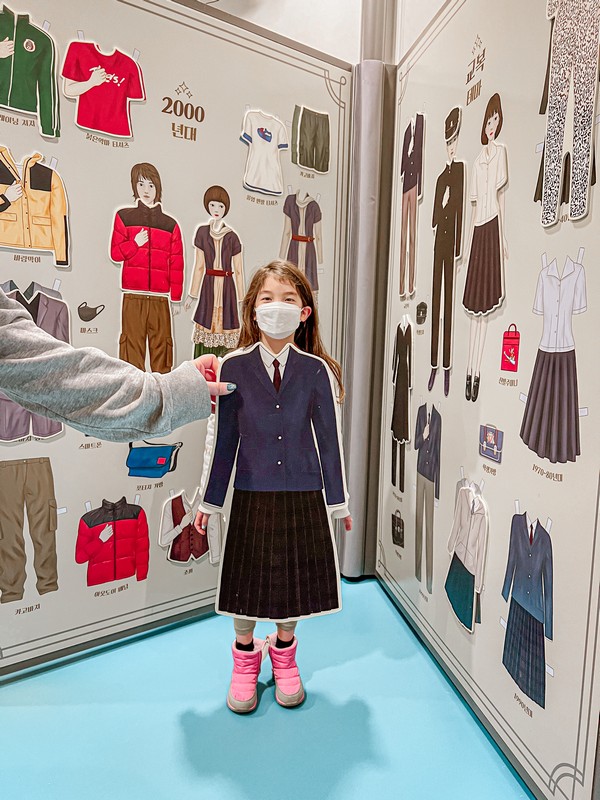
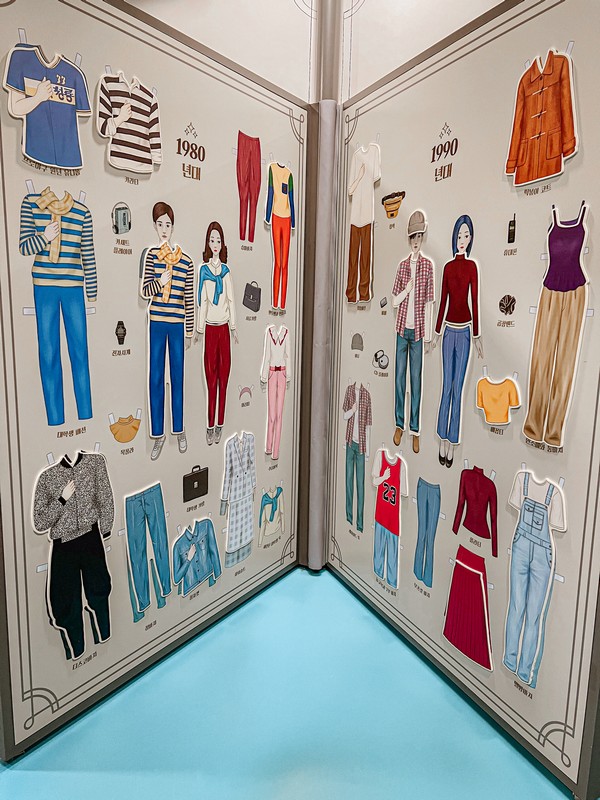


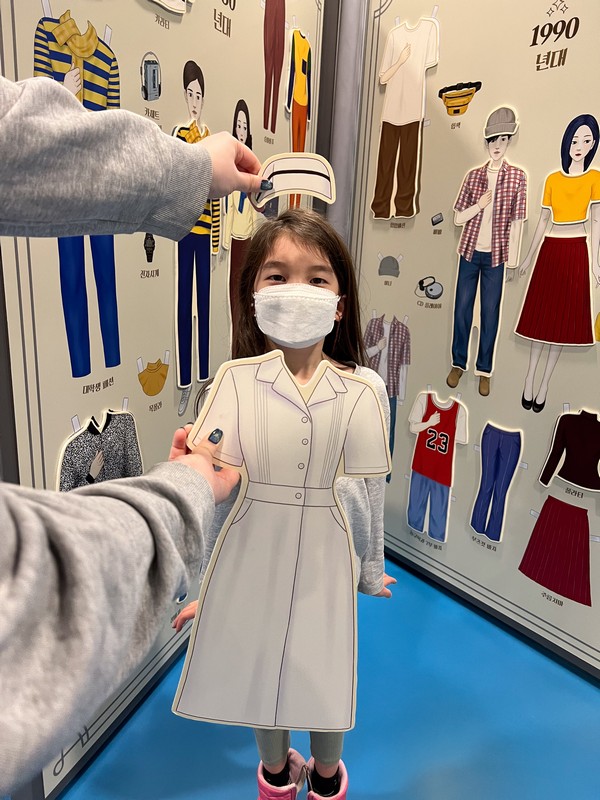
My daughter loved the “Eating in yesteryear” station where you can move food around creating various dinner scenarios. Different time periods in Korea have seen meals look albeit slightly different and you can see that here.
Use the old school rotary phones, and if you have kids introduce them to the world of phones that were connected to the wall. There are two public telephones, which provide a link to some time in Korea’s past.
If you like the Korean noraebong, or karaoke room, there’s even a Dance Dance Revolution style room that plays grassroots activist songs full of generational sentiments. Along with the rhythmic game, even if you don’t understand the songs, some of which I’m sure you’ll recognize if you’ve been in Korea for awhile, it’s still fun to hop into and dance.

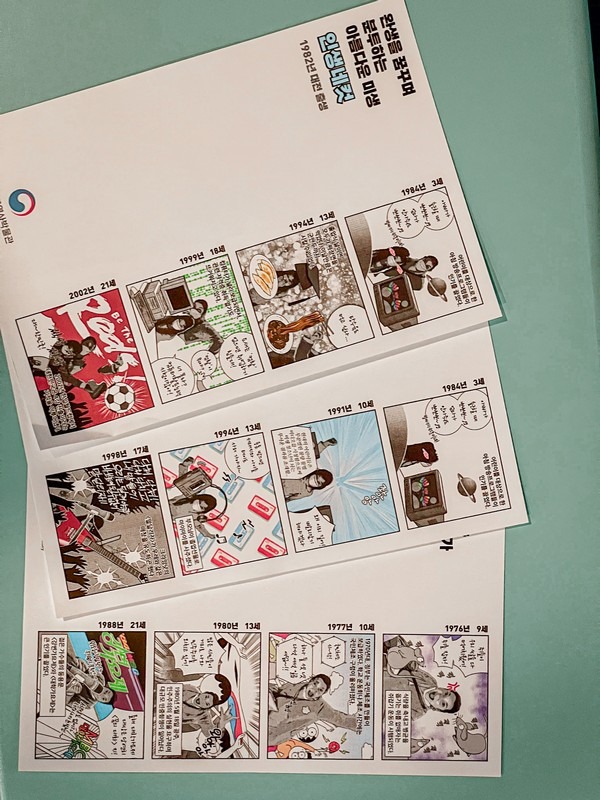
Ending the round up of stations were two of our favorites, “Fashionistas” which is like a paper doll game. Remove Korean illustrated fashion pieces from the life-size book and see what you can dress up as. And then there was the “Personal Snapshot of Life” where you can pose for some pics and make your own comic strip which will be on the wall and printed out for you to take home.

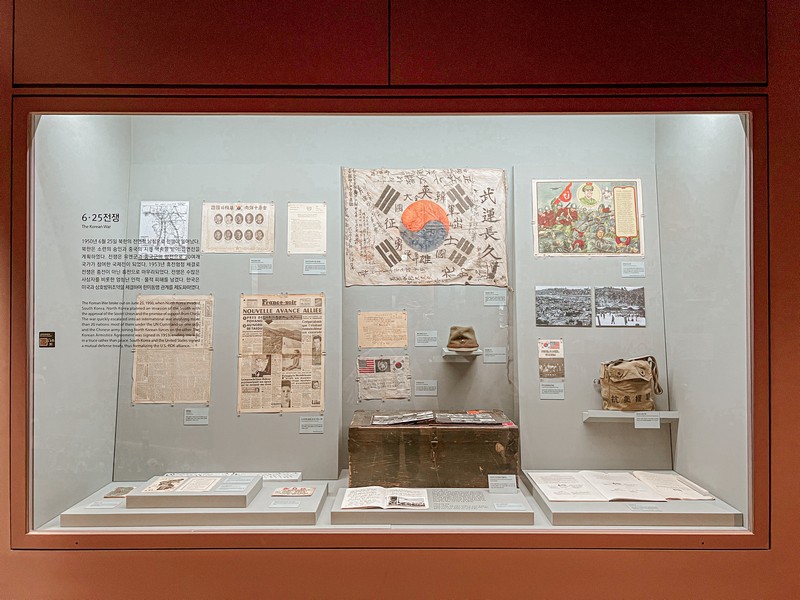

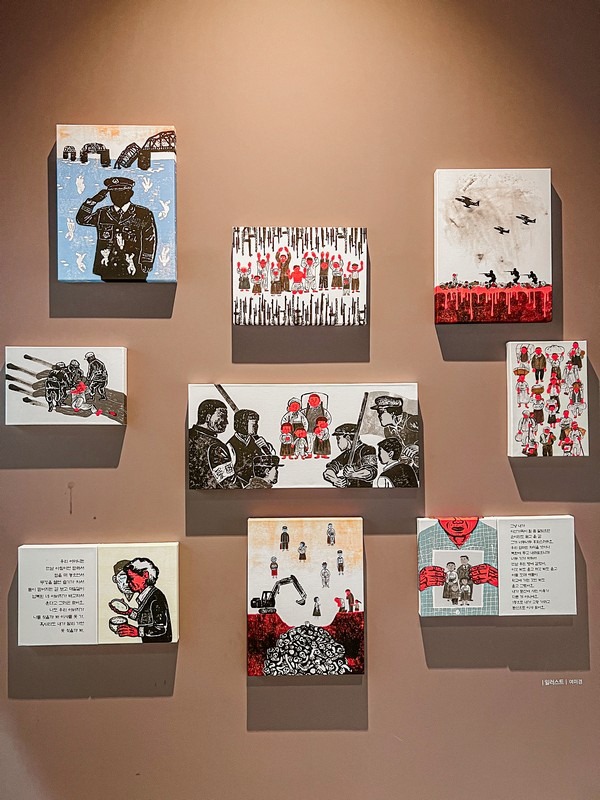
The History Gallery
There are three galleries making up this exhibition and feature information on the push for freedom, equality, and independence. It continues through colonization and into liberation and the Korean War and then even gets into arts and culture of contemporary times that pushed for democracy and the globalization of Korean culture.

Where to See Gyeongbokgung Palace from Above
The museum not only has some great interactive exhibitions and information to share, but it also hosts a rooftop observatory which is the perfect place to get a view from Gyeongbokgung Palace and Gwanghwamun Square from above. If you’re wondering where those photographers go, this is one of the spots. If you want to go straight there, head into the museum, go to the elevators to the left and take the elevator straight up to the 8th floor to find access to the rooftop.

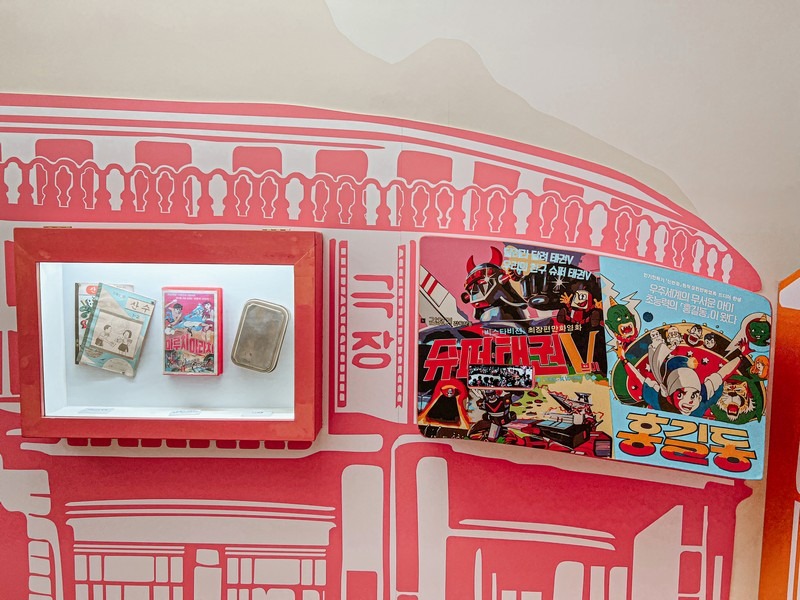
Visitors to Gwanghwamun Square can easily include the National Museum of Korean Contemporary History in their Seoul itinerary, making it a perfect addition to a day spent exploring one of Seoul’s most iconic areas. For those wondering what to do at Gwanghwamun Square, the National Museum of Korean Contemporary History is a must see. It’s super fun and interactive and free and is one of the most underrated museums in downtown Seoul.
Did you like this post? Pin It!
